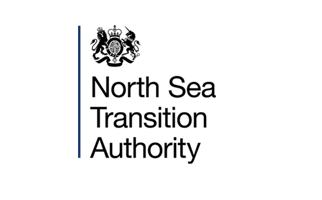
More than three billion barrels of oil equivalent (boe) remain in approximately 350 unsanctioned discoveries across the UK Continental Shelf (UKCS), according to information released by the Oil and Gas Authority (OGA).
Of the three billion, the majority are ‘small pools’, defined as less than 50 million boe technically recoverable, and are located within potential tieback and/or extended reach drilling distance to existing infrastructure. However, a number of these small pools lie further away from existing infrastructure and therefore could require stand-alone type solutions to recover hydrocarbons.
This analysis, completed by detailed maps of the discoveries, was developed by the OGA as part of the Technology Leadership Board’s (TLB) Small Pools Work Group, supported by The National Subsea Research Initiative (NSRI), Centrica, EnQuest and The Industry Technology Facilitator (ITF).
Carlo Procaccini, OGA Head of Technology, said: “We recognise the challenges operators are facing to develop these marginal oil and gas accumulations. Small pools represent a very significant opportunity to maximise economic recovery (MER) from the UKCS.
“Technology has an important role to play to reduce the cost of development wells, design optimised subsea infrastructure to existing host facilities and develop efficient standalone concepts.
“We are committed to working together with the industry, the TLB and the new Oil and Gas Technology Centre (OGTC) which has dedicated one of their Solution Centres to unlock the small pools potential.”
The publication of the Information Pack by the OGA follows a series of small pool themed ‘hackathons’, facilitated by the NSRI, which took place last year with around 100 companies participating. From these, more than 100 outputs (ideas, technologies and efficiency measures), were generated that could assist with unlocking the small pools.
Among technologies short-listed for further screening were those that could reduce subsea tieback costs, including mechanical hot taps, mechanically connected pipelines and spooled pipeline products, as well as novel concepts for efficient standalone solutions such as subsea storage, unmanned production buoys and small, versatile floating facilities. In parallel, Oil & Gas UK’s Efficiency Task Force looked at near-term efficiencies in subsea installations, achievable through simplified design and standardised equipment.
Dr Gordon Drummond, project director of NSRI, said: “Small pools have a national importance in terms of achieving MER and they must be considered as an industry asset if they are to be capitalised upon.
“Following an extensive mapping exercise, we now know exactly where these small pools are located and what is required to unlock their potential. If the subsea industry can rise to the challenge of economically tapping into these pools, the North Sea could have a whole new lease of life.
“Technology is only part of the solution, the industry must be much more receptive to innovation – there must be a willingness to work more collaboratively on multi-field applications and on access to infrastructure.”

ENDS
For more information please contact:
Leona Minellas
Press and Media Advisor
Oil & Gas Authority
Tel: +44 (0) 300 020 1072
Email: leona.minellas@nstauthority.co.uk
Notes to editors:
- The UKCS Unsanctioned Discoveries Information Pack is available here
- The UKCS Unsanctioned Discoveries Information Pack provides:
- Technically recoverable volumes by region, ownership distribution and proximity to infrastructure in a series of bar charts and scatter diagrams
- Detailed area maps showing each unsanctioned discovery, well number, location, and hydrocarbon type (oil, gas, and condensate)
- P50 recoverable volumes (value ranges) are also shown on each map, but for the unlicensed discoveries only.
- A small pools interactive map will complete the first phase information release and will be added to the OGA website in due course
- Further work is underway to progress the small pools theme in conjunction with the OGTC and the TLB. The OGA will be conducting a more detailed assessment of the small pool opportunities and further information is planned for industry release
- The data used in this study is from the OGA’s Potential Additional Resources (PARS) 2015 database, which contains discoveries for which there are no current plans for development
- The OGA’s current best estimate of remaining recoverable hydrocarbon resources from the UKCS is in the range 10 to 20 billion barrels of oil equivalent (boe) as referenced in the Summary of UK Estimated Remaining Recoverable Hydrocarbon Resources 2015 Summary Table Giving Ranges of UK Reserves
- Licensing data is from Petroleum E-business Assignments and Relinquishment System (PEARS). Details of this database can be found on the OGA website
- Maps outlining the unsanctioned discoveries, including small pools, in the Central North Sea, Northern North Sea, Southern North Sea and Moray Firth Basin can be found here
- The Technology Leadership Board (TLB) works with the industry, government and other stakeholders to define priorities to adopt, adapt and/or develop oil and gas technologies, securing investments, to deliver MER UK and strengthen UK oil and gas industry competitiveness
- The TLB is co-chaired by Carlo Procaccini, OGA Head of Technology and Paul White, Director Subsea Technology at GE Oil and Gas


